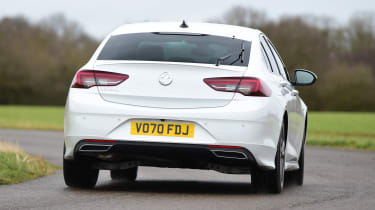Vauxhall Insignia (2017-2022) review - MPG, CO2 and running costs
The Vauxhall Insignia diesel models offer a good mix of power and economy, although there's no petrol plug-in hybrid tech

With no plug-in hybrid technology on offer, the Insignia diesel models offer the most efficient option for buyers. Vauxhall claims the same fuel economy figure for both the 120bhp and 172bhp versions: the six-speed manual cars return a maximum of 61.4mpg, while the auto versions manage 56.5mpg on the combined cycle. On our own test with the lower-powered manual variant, we saw just 41mpg, so you'll need to have a light right foot and spend a lot of time at cruising speeds to meet the manufacturer's figures.
CO2 emissions are from 121g/km for the diesel manual car, which gives a Benefit-in-Kind rate of 28%, while switching to the auto brings a slight increase to 130/131g/km and a BiK rate of 30%.
The 2.0-litre petrol models don't really stack up as being particularly efficient options, offering around 35-38mpg with high CO2 emissions that will attract the highest rate of tax for business users.
Insurance groups
Entry-level diesel SE Nav models are in groups 16-17, moving up to group 25 for SRi VX-Line Nav and Ultimate Nav cars. Petrol versions are again more expensive to run, with the 197bhp and 227bhp variants in groups 27 and 30 respectively.
Depreciation
According to our data on residual values, the Insignia won’t hold its value as well as most of its rivals, although the facelifted model fares a little better than the pre-2020 lineup. It should hold onto around 42% of its original value over a typical three-year/36,000-mile ownership period, which is around 5% down on its Skoda Superb rival.









